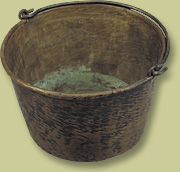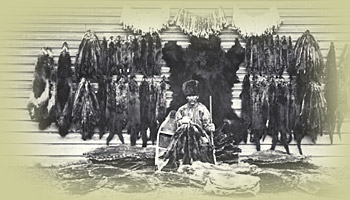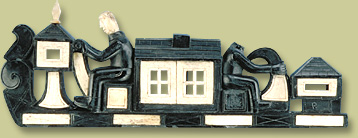|
|
Arrival of Strangers - The Last 500 YearsEarly RelationsMiddlemen and TrappersUntil the early 1800s, the markets for European-Aboriginal trade seemed limitless. Europe wanted furs, and Aboriginal societies absorbed trade goods. In large trading regions, not everyone lived near a post. Some Aboriginal people became middlemen. Middlemen helped ensure the flow of furs to the post and manufactured goods to Aboriginal people living some distance away.
Assiniboine and Cree middlemen travelled annually to York Factory in canoes filled with furs trapped and processed over the winter months. To ensure peaceful trade, European and Aboriginal traders held ceremonies before trading. As in trade among Aboriginal people, the ceremony involved smoking a pipe, making speeches, and exchanging gifts between trading captains and the post's chief factor. Some Pacific Coast chiefs became very rich middlemen. At first, American, British and Russian ships travelled to villages along the west coast to trade for sea otter furs. By the early 1800s, sea otters were nearly extinct. Aboriginal people on the coast began taking manufactured goods inland to trade for the furs that were abundant in the interior. Besides furs, the non-Aboriginal traders on the west coast bought wood, ivory and argillite carvings, woven hats and baskets, and other items. Many of these objects ended up in curio cabinets in officers' clubs throughout the world. They eventually became part of museum collections in places as diverse as Boston, London, St. Petersburg and Madrid.
| |||


